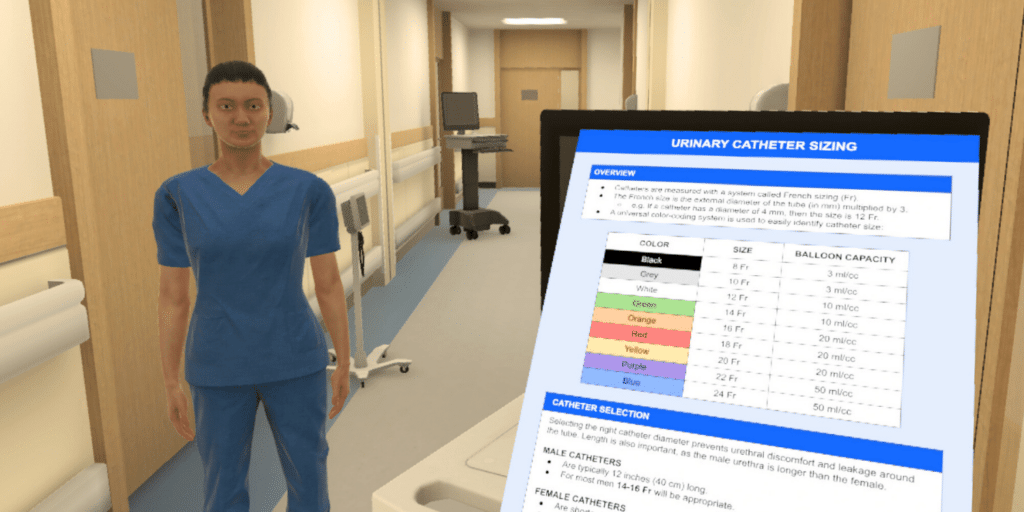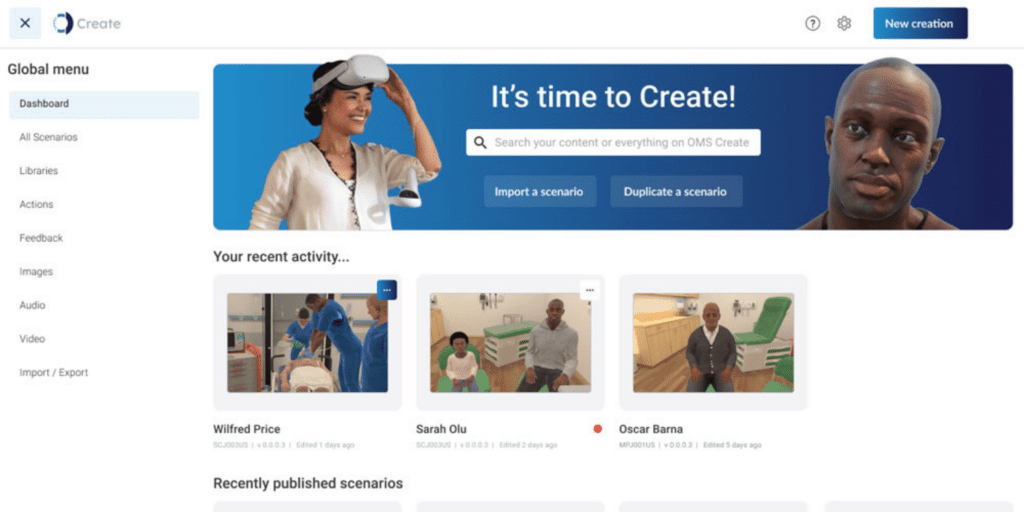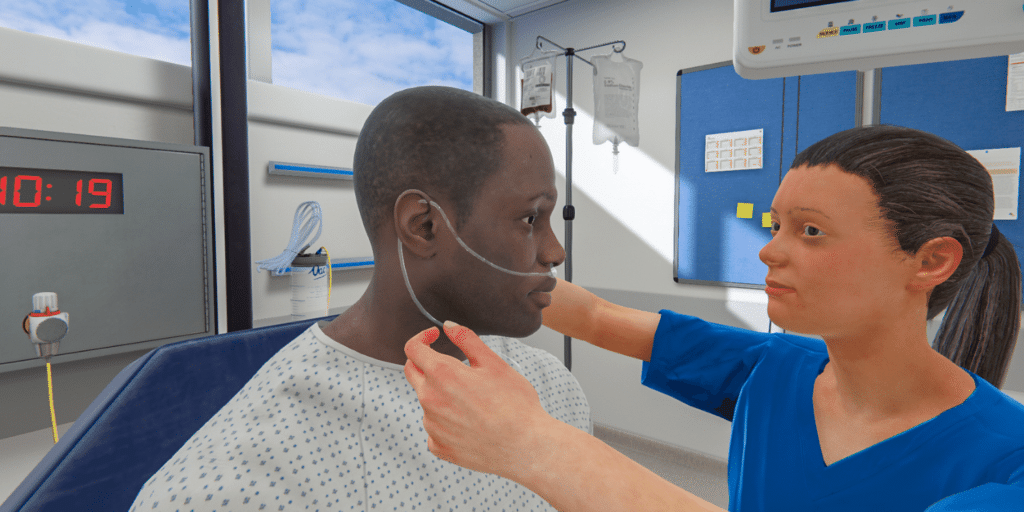When you’re in the midst of searching for a VR partner, it’s important to understand how their scenarios are built. Not all VR simulations are created equal, and you’ll likely want the scenarios you use to be grounded in evidence and current best practices.
At OMS, the sentiment is that there’s a responsibility to create consistently high-quality, evidence-based clinical scenarios – which is why we’re giving you an inside look at how we strive to do just that.
Who creates the scenarios?
Multiple teams at OMS work together to ideate, build, iterate, and update scenarios.
The Product Management Team, who are clinicians and experts in simulation, work with clients to figure out what needs to be built, what the learning objectives are, and what the roadmap should look like.
Then, the Clinical Authoring Team and Simulation Engineers work to make it happen.
The Clinical Authoring Team is made up of clinicians, simulationists, and educators who have deep knowledge to pull from in order to build robust narratives within scenarios. They work hand-in-hand with the Simulation Engineers, who construct the technical elements of scenarios.
The clients who partner with OMS to create custom content are involved from the very start. They help to decide the core of the scenario, the learning objectives, the initial specifications, and which guidelines are used to build from.
How do scenarios get built?
It all starts with a list of questions:
- What is the problem we’re trying to solve?
- What are the lessons or skills that learners should take away?
- Which modalities need to be built-in to meet those objectives?
- What would be most impactful for the learners completing the scenarios and the patients who will ultimately receive their care?
As the questions above get answered, a roadmap takes shape, at which point Clinical Authors and Simulation Engineers begin their work on the creation of the environment, character(s), and actions or tasks.
As construction begins, the authors continuously think about the feedback learners will receive, how that fits into the learning objectives, and how the scenario as a whole fits together to achieve those objectives.
At the same time, Clinical Authors look at the best practice evidence and implement the most up-to-date guidelines to build realistic, accurate simulations. Because the core of the scenario is based in evidence, the actions learners should take and the feedback they receive is grounded in best practices, as well.

All the while, there’s a continuous iterative process happening between the Clinical Authors, Simulation Engineers, and, if applicable, clients. Clients who are involved in this process receive regular updates and provide feedback to OMS throughout the creation of a scenario.
Are scenarios reviewed?
Yes, any scenario that’s created undergoes a structured, multistep review process that begins with a technical peer review. At this stage, the Quality Assurance team ensures the usability and accessibility of a scenario before it moves on to the next phase, the clinical peer review.
During the clinical peer review process, the scenario goes through a review with another Clinical Author. Depending on the subject, a subject matter expert may be brought in to consult – scenarios with a focus on diabetes management or mental health are good examples of this.
After the scenario has been approved through both the technical and clinical peer review processes, it moves on to the final review process with other team members to ensure it’s ready for release.
Following its release, team members conduct regular reviews of best practices and clinical guidelines to ensure scenarios are always up-to-date. Additionally, OMS continues to take feedback from clients and adapt the scenario to fit clients’ needs.
Becoming your own clinical author
Through the use of the no-code platform, OMS Create, you now have the same freedom and flexibility that the internal authors at OMS have in creating scenarios.
Here, you can adapt content, with or without the help of OMS teams, meaning you can become a clinical author, too!
Make immediate changes to the scenario, like with physiology, medications, or new images, guidelines, or audio.

Changes can be made to feedback and scoring, as well. For example, if you work in a healthcare facility, you may want the guidelines listed in the scenario to reflect your hospital’s policies and procedures. You may also choose to weight feedback differently or create benchmarks for passing a given scenario. If you work in education, you may decide to align feedback with a given competency framework to see where your learners are well-prepared and where there’s room for improvement.
The knowledgeable and supportive teams that create and manage the OMS scenarios are learner and patient-minded, consistently working to ensure scenarios are true-to-life, engaging, and remain grounded in best practices.
To learn more about how you can work with OMS to create your own scenarios, set up a time to chat with us here.
